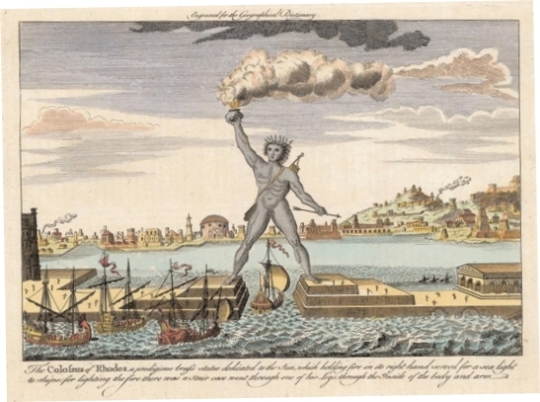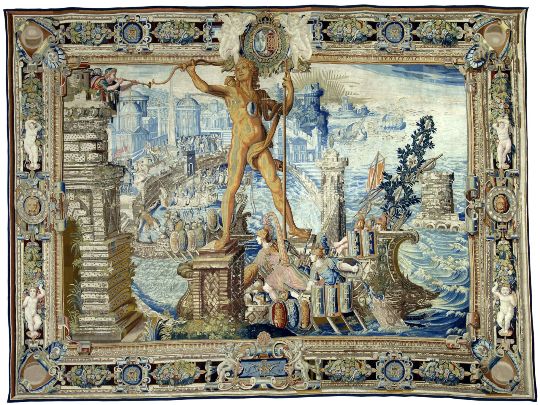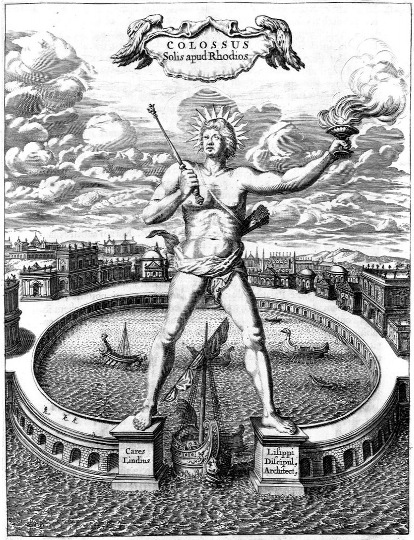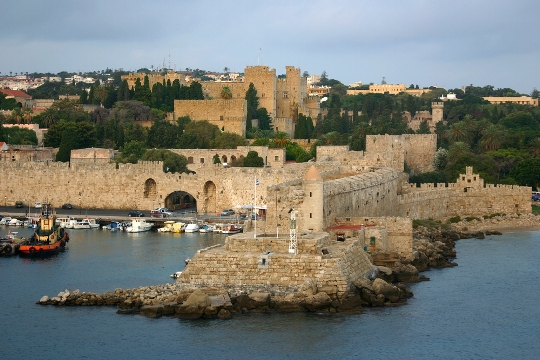Seven Wonders of the World Colossus of Rhodes
Try to picture a massive statue of 33 meters high weighting about 225 tons, which took nothing less than 12 years to be constructed with 15 tons of bronze and 9 tons of iron. Now imagine the impressive statue erected, between 292 and 280 BC, at the entrance of the famous ancient port of Rhodes Island to welcome its visitors; This statue is the imposing Colossus of Rhodes, one of the 7 Wonders of the Ancient World.
According to the legend, on the 4th century BC, God Sun saved the Rhodians from the persistent seize of the Macedonian General, Dimitrios Poliorkitis. As an expression of gratitude, they constructed this gigantic statue, which was actually twice as tall as Fidias’ statue of Zeus in Ancient Olympia and was reflecting the sun’s light, bedazzling the visitors as a convincing image of the Olympian God.
Colossus was a brilliant way to promote Rhodes’ prosperity and technology and as many historians point out, Chares –the Lyndian sculptor- achieved something that nobody thought was possible. He turned his God into a “real God”. It was like he created a second Sun that was facing and reflecting the real one!
Oddly enough, we have very limited information about the statue’s accurate figure and face, since the archeological evidence is contradictable. In many ancient Greek coins, the statue appears with sunrays on the head, while in other with no sunrays at all. Additionally some scientists believed that the God was holding in his right hand a torch (like the Statue of Liberty) and others that his right hand was above his eyes and his left hand on his hip.
Equally contradicting were the opinions concerning the statue’s lower body. Some said that since the God was appearing naked, it would be impossible to base this massive body on such skinny legs and ankles. This is why it was believed that maybe Sun was wearing some sort of a cloak that was hanging from his shoulder all the way down to his legs. Finally, some say that it would be impossible for the statue’s legs to be spread, as they would have to be about 100 meters away from one another, in order to allow ships to sail underneath.
Sixty years after the statue’s inauguration, around 226 BC, a massive earthquake that took place brought it to its knees. It is believed that about 30 houses were destroyed by the fall! Despite the awful collapse, the bronze statue never stopped being considered as one of the greatest Wonders of the World. The body was lying on the ground for about 100 years when Antipatros of Sidona, a writer of Greek-Phoenician descent, included it in his list. Plinius the Elder stated that: “Even lying on the ground, it’s still a wonder. Very few people can actually hold the God’s thumb, since his fingers are bigger than most statues”.
The Colossus of Rhodes was not only a work of unparalleled art and aesthetics. It was built as a token of gratitude to God Sun, who was the island’s patron, and symbolized the freedom and independence of the Rhodians. Even though it was destroyed 60 years after its construction, its reputation crossed the borders of Greece and remained in history as one of the 7 Wonders of the Ancient World.
This is why the word “Colossus” means something massive, imposing and impressive, in almost all the languages of Latin origin and actually this is why the famous theater of ancient Rome was named Colosseum. The architecture, the design and aesthetics of the statue inspired many artists over the centuries.
About 25 years ago, some missing parts of the ancient statue were supposedly found. However it was proved they were remains of a different era’s monument. The mystery of Colossus’ accurate shape will remain unresolved, it will though always be a wonder that reflected the grandeur, but also the vanity of the human ambition.






Pingback: Tweets that mention Colossus of Rhodes -- Topsy.com